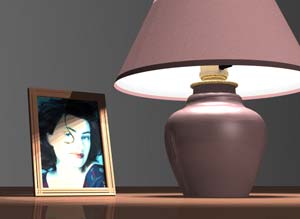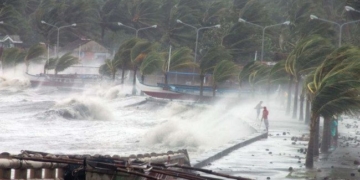While the overall energy supply and electricity generation capacity are not yet sufficient to meet the growing demands of the economy, especially in the near future, the consumer electricity prices are likely to rise. Therefore, the best approach that benefits both businesses and consumers is to focus on energy-efficient electricity usage. However, how to use electricity effectively is a critical issue. We would like to introduce some methods for energy-efficient electricity usage for your reference.
 |
|
(Photo: mattkruse) |
According to calculations from relevant authorities, with the current high GDP growth rate, electricity production must triple within the next 10 years to meet demand: from 26.6 billion kWh in 2000 to 70.4 billion kWh by 2010; at that time, Vietnam will need an electricity capacity of over 17,000 MW, with a massive projected investment of up to 18-19 billion USD. Therefore, the immediate challenge is how to use electricity wisely.
For Household Electricity Usage:
Common electrical appliances used in residential areas include: lighting fixtures, fans, radios, televisions, refrigerators, air conditioners, and washing machines. These devices are frequently used and consume a large amount of electricity. Therefore, to use them efficiently and reduce electricity consumption, some measures should be implemented:
For lighting devices, it is advisable to replace high-wattage incandescent bulbs with compact fluorescent lights that consume less energy, reducing the power of each bulb to 10-17W, which corresponds to a decrease in electricity consumption of 19-33%. For street lighting systems, high-pressure sodium (HPS) lamps of 150W should replace commonly used mercury vapor lamps and incandescent bulbs. Since lighting accounts for 40-80% of the electricity consumption in each household, it is essential to use it wisely and consider the color of walls and curtains during housing design; lighter shades should be used to reflect more light.
When using electric fans: Pay attention to the size and structure of the room to arrange the number of fans accordingly. Generally, using a ceiling fan is much more energy-efficient than using several smaller fans. However, if the house structure does not allow for a ceiling fan, table fans should be used. In this case, avoid choosing fans with small, lightweight motors as they heat up more quickly, have lower efficiency, and consume more electricity. Regular cleaning is necessary; lubricate the motor bearings and replace the grease in the fan gear (gearbox), and check the voltage rating of the device to ensure it matches your household’s electrical supply.
For refrigerators, electric irons, and washing machines: When using a refrigerator, always check the door seals to prevent leaks, as leaks not only risk spoiling the contents but also lead to increased electricity consumption. Additionally, never place hot food directly into the refrigerator; let it cool first. Avoid opening the refrigerator door repeatedly for long periods, and do not place the refrigerator against walls to allow the hot air to dissipate easily; maintain a distance of at least 5-10 cm from the walls on all sides. Keep the refrigerator away from the kitchen and heating sources, and avoid placing it in direct sunlight; always set the cooling level to medium.
For electric irons: It is best to use an iron with a power rating of 1kW. Choose an iron with adjustable temperature settings for convenience and energy savings. When using, ensure the iron is clean and polished for better heat conduction, which saves electricity and enhances performance.
For washing machines: Washing machines are one of the highest electricity-consuming appliances. Before use, familiarize yourself with the operating instructions. Ensure proper installation and usage according to the manufacturer’s guidelines. When washing, gather all items to be washed, sort them by color, fabric type, dirt level, and ensure to wash similar items together. Doing so will enhance efficiency, save electricity, water, detergent, and time. Do not exceed the recommended weight limit for laundry. Importantly, remember to turn off the power immediately after use. Forgetting to switch off the electricity can lead to equipment damage or unnecessary electricity consumption.
For water heaters and air conditioners: These two appliances are among the highest electricity consumers in households. Therefore, always set the water heater to a medium temperature for longer durability, and do not keep it powered all day. In summer, heat water for only 5-10 minutes, and in winter for 15-20 minutes. Additionally, install an automatic cutoff system to disconnect the water heater from the grid when not in use for extended periods, and consider adding insulation to minimize heat loss in the heating system.
As for air conditioners, the first step is to choose a model that matches the room size and the number of occupants. Opt for an air conditioner with an electronic automatic control system, which can save approximately 30% of electricity. To avoid high electricity costs, regularly clean air filters and service the unit to prevent dust buildup. Avoid setting the air conditioner to excessively low temperatures; aim for around 25oC. Do not place the air conditioner in sunny spots.


















































